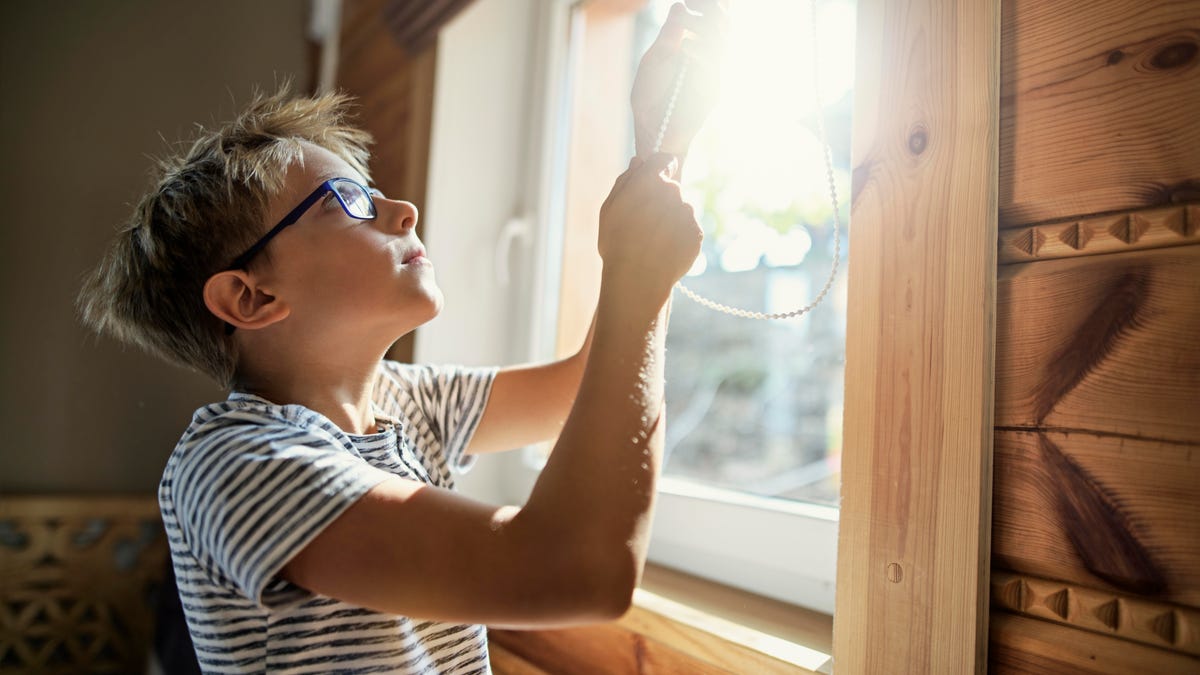 Why You Can Trust CNET
Why You Can Trust CNET Effective Ways to Lower Your AC Bills While You're Away on Vacation
Should you leave your thermostat on when traveling? Here's what you need to know.

Lowering your blinds helps keep your house cool.
When you leave home for a summer trip, you might be tempted to turn your air conditioning completely off to save some money on your electricity bill. But as outdoor temperatures soar, this can result in an overheated, humid home that you'll dread returning to.
You probably shouldn't turn your thermostat off, but luckily, you don't have to spend a fortune to keep your house cool. With a little help from technology ranging from window shades to smart thermostats, and some proactive planning, you can switch off the lights and enjoy your vacation without worrying about spiked energy bills when you return.
Below are seven tips for saving money on your home's AC when you go on summer vacation. With them you can kick back, relax and lower your utility bill. For more, explore the best portable air conditioners and best window air conditioners of the year.
1. Rely on your smart thermostat
Smart thermostats take the guesswork out of programming your home's heat and AC. When you go on your trip, enable the thermostat's vacation mode. Vacation mode sets the temperature for you, making it warmer while still running the AC at regular intervals. Some of these units even use motion sensors to detect when you are away and make temperature adjustments for you, to reduce energy costs while you're gone and have your home feeling comfortable again when you return.
Setting a higher thermostat temperature while you're away can reduce your energy costs substantially. The US Department of Energy recommends setting your thermostat 7 to 10 degrees warmer for at least eight hours a day. Doing so nets you an energy savings of up to 10% off your cooling bill.
2. Set manual thermostats higher
If you do not have a smart thermostat, you can maximize efficiency by setting your manual one 5 degrees higher than you normally would. Letting your house get too hot could cause some damage (think of your houseplants) and wipe out energy savings by making your fridge and freezer work that much harder. Sure, you will come back to a warmer home, but you'll also reduce your energy usage significantly. For more, explore the best energy-saving temperature for your thermostat.
3. Keep your shades and blinds closed
Another way to trim energy costs is to keep your windows shaded when you are away. It helps to block out the sun's rays, which warms your home through heat gain. In turn, it prevents your air conditioner from kicking on more often, resulting in more energy usage.
Aim for medium-colored shades with white plastic backings. The Department of Energy states these shades can reduce heat gains by as much as 33%.
4. Install window awnings
Another way to reduce the stress on your air conditioner is to add window awnings to your home. Window awnings are exterior shades, blocking the sun's rays from penetrating your windows and entering your home. Awnings can reduce solar heat gain up to 77% on west-facing windows and 65% on south-facing ones. The Department of Energy recommends choosing one that is tightly woven and opaque.
5. Use a dehumidifier
If you live in an area with higher humidity, consider supplementing your air conditioner with a portable dehumidifier. Dehumidifiers work by pulling moist air in, absorbing the moisture through water-absorbing material, then circulating drier air back into your home. The result is a more comfortable home that won't rely on your air conditioner as much.
6. Scan your HVAC
Before going on your trip, consider inspecting your home's HVAC unit. Technicians will examine your air conditioner to ensure everything is operating correctly. If they notice any problems, they can make repairs before you leave.
It is better to have issues addressed early instead of returning to an AC unit on the fritz. And, by having your system running in optimum condition, you can maximize its efficiency.
7. Automate energy savings with your smart home
In the meantime, if you have a smart thermostat, consider integrating it into your smart home system. Many units pair with Amazon Alexa, Apple HomeKit, Google Assistant and more, permitting you to control your temperature, locks, and lights from one hub. This allows you to maximize energy efficiency and keep your home secure, even if you are thousands of miles away.
Do you have a portable or window air conditioner? Follow these suggestions below to save money on your energy costs: